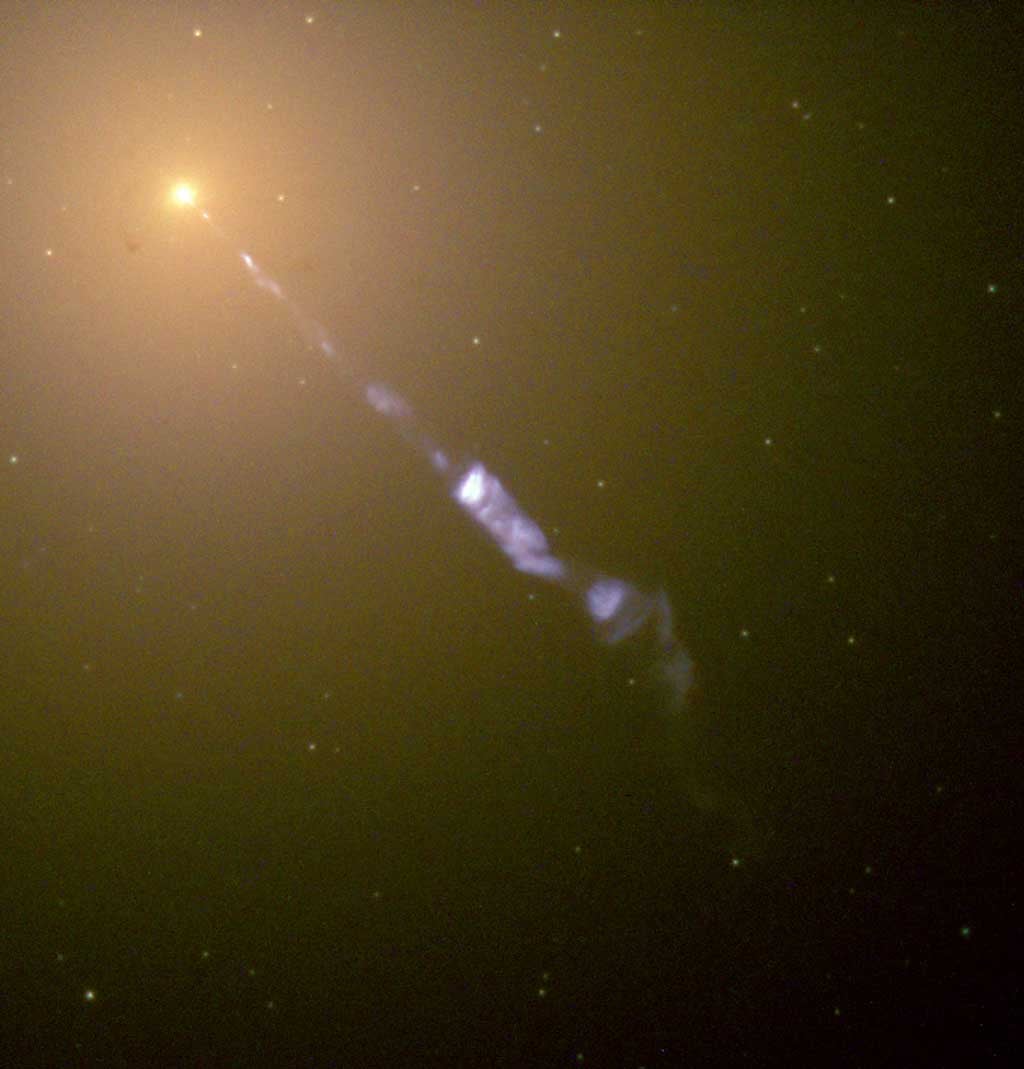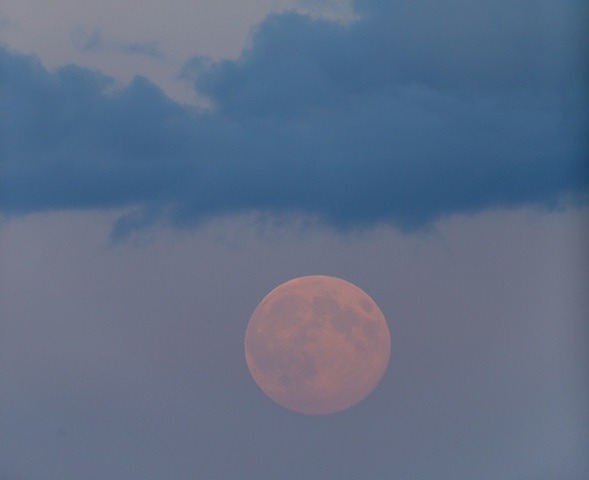A team of astronomy researchers at the Florida Institute of Technology, the Rochester Institute of Technology (RIT) in New York, and the University of Sussex in the United Kingdom have found that the supermassive black hole at the center of M87, the most massive local galaxy, is not where it was expected. Their research, which was conducted using the Hubble Space Telescope (HST), concludes that the black hole in M87 is displaced from the galaxy center.
The most likely cause for this supermassive black hole to be off center is a previous merger between two older, less massive ones. “We also find, however, that the iconic M87 jet may have pushed the supermassive black hole away from the galaxy center,” said Daniel Batcheldor, at Florida Tech in the department of physics and space sciences.
The study of M87 is part of a wider HST project directed by Andrew Robinson, at RIT. “What may well be the most interesting thing about this work is the possibility that what we found is a signpost of a black hole merger, which is of interest to people looking for gravitational waves and for people modeling these systems as a demonstration that black holes really do merge,” said Robinson. “The theoretical prediction is that when two black holes merge, the newly combined black hole receives a ‘kick’ due to the emission of gravitational waves, which can displace it from the center of the galaxy.”
“Once kicked, a supermassive black hole can take millions or billions of years to return to rest, especially at the center of a large diffuse galaxy like M87,” said David Merritt of RIT. So searching for displacements is an effective way to constrain the merger history of galaxies.”
Jets, such as the one in M87, are commonly found in a class of objects called active galactic nuclei. It is commonly believed that supermassive black holes can become active as a result of the merger between two galaxies, the infall of material into the center of the galaxy, and the subsequent merger between their black holes. Therefore, it is very possible that this finding could also be linked to how active galaxies, including quasars, the most luminous objects in the universe, are born and how their jets are formed.
Because many galaxies have similar properties to M87, it is likely that supermassive black holes are commonly offset from their host galaxy centers. The potential offsets, however, would be very subtle, and researchers would rely on the HST to detect them.
“Unfortunately, the highest spatial resolution camera onboard HST could not be revived during the recent servicing mission,” said Batcheldor. “This means we have to rely on the huge archive of HST data to find more of these vagrant supermassive black holes as we did for M87.”
Regardless of the displacement mechanism, the implication of this result is a necessary shift in the classic black hole paradigm; no longer can scientists assume that all supermassive black holes reside at the centers of their host galaxies. This may result in some interesting impacts on a number of fundamental astronomical areas and some interesting questions.
For example, how would an accreting — growing by the gravitational attraction of matter — or quiescent supermassive black hole interact with the surrounding nuclear environment as it moves through the bulge? What are the effects on the standard orientation-based unified model of active galactic nuclei, and how have dynamical models of the black hole mass been centered if the object is quiescent?
Especially thought-provoking, said Eric Perlman, at Florida Tech, is that our own galaxy is expected to merge with the Andromeda Galaxy in about 3 billion years. “The result of that merger will likely be an active elliptical galaxy similar to M87. Both our galaxy and Andromeda have supermassive black holes in their centers, so our result suggests that after the merger the supermassive black hole may wander in the galaxy’s nucleus for billions of years.”
“In current galaxy-formation scenarios, galaxies are thought to be assembled by a process of merging,” said David Axon at the University of Sussex. “We should therefore expect that binary black holes and post coalescence recoiling black holes, like that in M87, are very common in the cosmos.”










